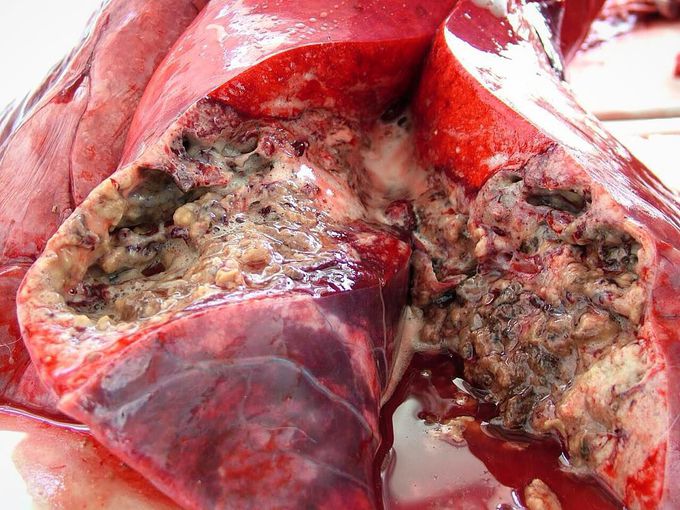


Tuberculosis affected lung!
Here is the gross appearance of a lung with tuberculosis that underwent a caseous necrosis. Tuberculosis encompasses an enormously wide disease spectrum affecting multiple organs and body systems predominantly caused by the organism Mycobacterium tuberculosis. Pulmonary manifestations are most commonly seen by primary TB infection are a major source of spread of the disease and of individual morbidity and mortality. In primary pulmonary TB, the initial focus of infection can be located anywhere within the lung and has non-specific appearances ranging from too small to be detectable, to patchy areas of consolidation or even lobar consolidation. In most cases, the infection becomes localised and a caseating granuloma forms (tuberculoma) which usually eventually calcifies and is then known as a Ghon lesion. In nearly all cases, these granulomas resolve and there is no further spread of the infection. Secondary TB is seen mostly in adults as a reactivation of previous infection (reinfection), particularly when health status declines. The granulomatous inflammation is much more florid and extensively widespread. This pattern of multiple caseating granulomas primarily in the upper lobes is most characteristic of secondary (reactivation) tuberculosis. When there is extensive caseation and the granulomas involve a larger bronchus, it is possible for much of the soft, necrotic center to drain out and leave behind a cavity. Cavitation is typical for large granulomas with tuberculosis and is more common in the upper lobes.
Preparation for USMLETuberculosis of theTestisEffects of sugar on teethOral carcinomaCollapse of the left upper lobe of lung

